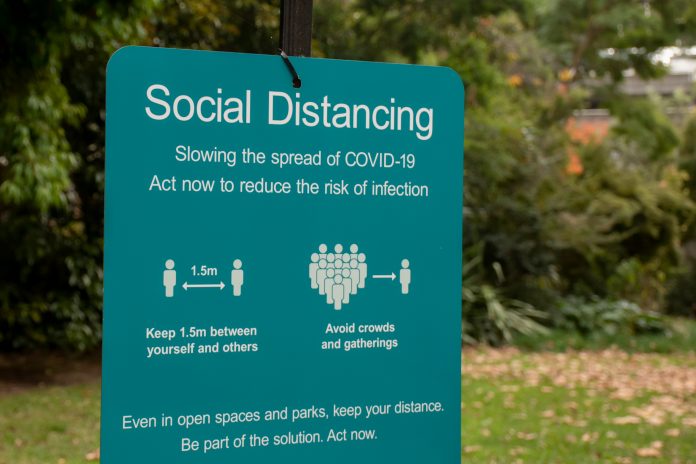Sébastien Paris, founder and CEO of ONHYS, explores how crowd simulation could be the key to mitigating the disruption caused by COVID-19
As we learn how to adapt our lifestyles amidst the ongoing pandemic, venue operators are looking for ways to reopen their doors to the public, while keeping their patrons safe. Many are weighing up the risks on whether it’s viable to reopen their doors to the public at all. However, despite this need to determine a safe level of capacity, current approaches fail to take into account the particularities of different venues, such as entrance and exit points, areas of congestion, surfaces amongst other factors. A more advanced approach is needed.
Current approaches to crowd control
Governments and businesses determine what a safe capacity is with the evidence that is available to them. Currently, this includes heavy use of theory and national-level statistics to show that people will be safe. This approach to calculating the levels of capacity has a generic set of rules, which by definition do not take into account the specificities of each venue. Venues may do this by limiting the capacity to a certain number of people, or just by cutting the capacity in half and then applying this across the board as a blanket rule for other organisations to abide by, in the hope that this will be sufficient enough to reduce risk.
While this ‘one-size-fits-all’ approach helps with public messaging and control, it does little to help organisations get back on their feet, ultimately hindering revenue capabilities. Additionally, due to the confusion and inadequacies of this approach, many major venues have opted to not reopen for the foreseeable future. The reality is that businesses won’t be able to reopen their doors safely and with confidence without a more evidence-led approach. Venue operators need to look to new contextual approaches that can adapt to changing regulations, risk profiles, human behaviours and serve the varying requirements of different spaces.
Onboarding new technologies
Given that the risks and infection rate of COVID-19 are changing on a daily basis, it is a huge task to ensure policies meet the science behind it. New, innovative crowd modelling technologies have emerged over recent years to help provide a pathway towards the safer reopening of our venues and public spaces. With the help of these breakthrough technologies, venue operators and event organisers can make data-led decisions on the risks of various crowd capacities. Results generated by the models can assist governments in safely reopening their towns and cities, while future-proofing their economies.
In response to the crisis, crowd simulation technologies can provide the flexibility and adaptability needed to address the possible viral spread of Covid-19. For example, the parameters can be configured to distinguish individuals based on their health status, which could be immune, healthy or contagious. The ages of populations are also taken into account, as different age groups can be more or less susceptible to contracting the virus. As our scientific understanding of the virus develops, so do the simulations.
Another variable in the simulation is how the virus is transmitted: direct contact, surface contact or airborne. Even the varying levels of risk can be adjusted on these models to show the outcomes if individuals were to use protective equipment, such as face masks and gloves. Not every venue is going to have the same layout, visitors, exit points or surfaces, so the virus will spread in different ways. Simulating the propagation of the virus in various spaces and under various conditions will allow governments and businesses to determine what a safe capacity will be for each individual venue, instead of just applying a blanket rule.
Other examples of crowd control technology include spatial modelling, which can help to accurately calculate the various capacities of different public spaces, from train stations and office buildings, to parks and beaches. These simulations can help organisations to understand the internal and external pressure points, such as the main points of congestion or bottlenecks. Using the metrics generated by these models, governments can make better-informed decisions around capacity.
Similarly, the use of crowd behavioural dynamics has been used to simulate crowd movements, and their interactions with their peers and the physical environment. Pedestrian movement is not always easy to calculate as individuals don’t always follow a straight-forward route or make rational decisions. Crowd dynamics technology has advanced in recent years to accurately anticipate and manage the behaviours of crowds.
Opening venues with confidence and care
Crowd simulation technology can empower venue operators to determine the best conditions for a safe restart. Using a combination of scientific modelling, data analytics and cutting-edge technology, this technology will assist in helping to keep the virus at bay, and reducing the chance of a second wave, putting confidence back into the public. Unlike current approaches, the parameters of crowd technology can be continually reconfigured to reflect the current state of epidemiological knowledge and to integrate official health guidelines and recommendations. This can then be applied individually to suit the requirements of different venues.
As we know, the pandemic has caused significant economic damage and will continue to do so without new solutions to mitigate its impact. We won’t be able to reopen our economies in a way that can secure public trust until we radically rethink our crowd management and use dynamic and contextual approaches that can make informed decisions on the risks posed. Now more than ever, these technologies are vital in the fight against the virus, and to get businesses back on their feet again.











